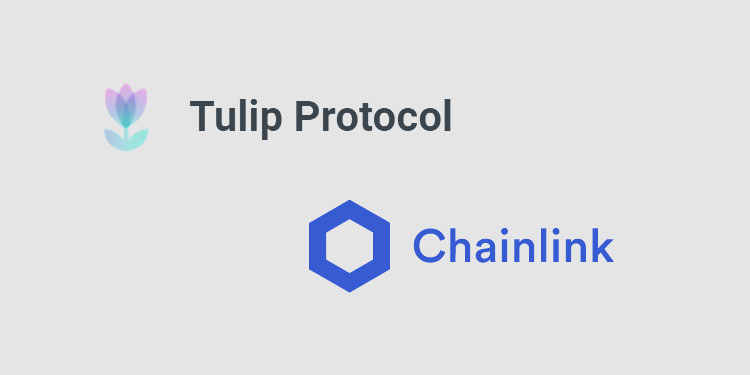Tulip, a yield aggregation and leveraged yield farming protocol, announced today it is integrating Chainlink Price Feeds. By integrating the popular oracle network, Tulip will gain access to a high-quality, tamper-proof source of financial market data needed to secure leveraged yield farm positions. As a result, both lenders and borrowers will have greater assurance that risky positions will be properly liquidated.
“We chose Chainlink as our go-to oracle solution because of its no-compromise approach to security and reliability, demonstrated by its verifiable history of accuracy and resilience during extreme market volatility, exchange/API downtime, and data manipulation attacks such through flash loans. Additionally, Chainlink Price Feeds on Solana can publish oracle updates on-chain at sub-second frequencies and with full market coverage to further ensure price data is reflective of real-time, global market conditions.”
– The Tulip Team
Securing Liquidations With Chainlink Price Feeds
A yield aggregation platform powered by Solana, Tulip offers advanced auto-compounding vault strategies. By taking advantage of Solana’s low-cost, high-speed blockchain network, yield can be frequently reinvested into vault strategies.
Stakers then benefit from higher returns without requiring active management. Tulip also offers leveraged yield farming for users to increase their yield when depositing into two-sided liquidity pools.
The leveraged yield farming platform aims to connect lenders—who earn an auto-compounded variable deposit rate yield—with borrowers who wish to increase their yield farming profits by paying to borrow additional assets that then get deposited into a farm.
When a leveraged yield farm position is opened, a user supplies and borrows against their collateral, depositing both assets into a liquidity pool to earn liquidity mining incentives and trading fees.
Opening a position results in the creation of a collateralized loan that must maintain a predefined loan-to-value (LTV) ratio. If the value of the collateral drops below an unsafe level, then the collateral is liquidated and sold to pay back the lenders.
In order to settle when yield farming positions should be liquidated, Tulip requires price data to determine the value of both the collateral and borrowed assets, which are used to calculate the LTV ratio.
However, due to the blockchain oracle problem, smart contracts cannot natively access off-chain data such as aggregated market prices. Smart contracts require an additional piece of infrastructure known as an oracle to fetch external data and deliver it back on-chain.
Because liquidations play such a key role in managing the risk exposure of the platform, Tulip’s oracle solution needs to also aggregate from many oracle nodes and sources to ensure accuracy, uptime, and resistance to manipulation.
After looking into different oracle solutions, the Tulip team determined that Chainlink could provide the perfect blend of premium data quality, robust oracle security, and rapid update frequency to help ensure its liquidation mechanism follows markets in real-time.
Reasons for choosing Chainlink Price Feeds include:
- High-Quality Data — data is sourced from numerous premium data aggregators, providing price data that is aggregated from hundreds of exchanges, weighted by volume, and refined from outliers and suspicious volumes.
- Secure Node Operators — independent, security-reviewed, and Sybil-resistant oracle nodes run by leading blockchain DevOps teams, data providers, and traditional enterprises ensure reliability, even during high gas prices and extreme network congestion.
- Decentralized Network — decentralized at the data source, oracle node, and oracle network levels, Chainlink offers strong protections against downtime and tampering by either the data provider or the oracle network.
- Blockchain Agnostic – Chainlink’s oracle networks operate at the native speed of the chain where data is being delivered without cross-dependencies on any other blockchain network. Chainlink Price Feeds on Solana have no dependencies on other chains, allowing for high-frequency updates at lower costs.






















